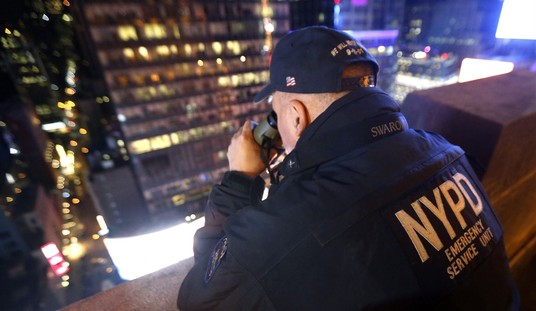Yesterday, I wrote about the affinity of so many on the Western Left for the old Communist East Germany. What they wish to restore, if only they could, is the nanny state without the compulsory police apparatus they claim to disdain. What they do not admit to is that to realize their people’s paradise the state would have to enforce the system by precisely those repressive mechanisms.
That is why, in fact, the DDR created the STASI, their Ministry of State Security. To gain acceptance for the socialist goals demanded by the state, they had to create an atmosphere of fear – without which, so many citizens would refuse to accept the life the regime’s rulers mandated. Of course, the rulers claimed it was done for the good of the people. When the STASI sent its agents to Nicaragua to train its secret police during the Sandinista regime’s heyday in the 1980’s, the Sandinistas cleverly named their secret police- I kid you not- “The Sentinel of The People’s Happiness,” a slogan which was inscribed on the front of the Interior Ministry’s headquarters.
Take the realm of art, which the regime claimed thrived in the years of the socialist society being built in East Germany. As A.J. Goldmann notes in his review of a 20th anniversary art show on art in both the East and West during the years of the Wall, “in the repressive atmosphere of East Germany, artists often paid a price for making provocative art.” One artist serves as an example. Annemirl Bauer found that her drawings inflamed the STASI, especially one of a naked man suspending from a clotheslines while being pierced through his navel and feet by a guard. As a result, she was expelled from the Artists’s Association, and forbidden by the regime to paint. Another artist, Roger Loewig, was imprisoned for “agitation and propaganda endangering the state.” The STASI destroyed his novel, although a powerful triptych, displayed in the current exhibit, reveals how he composed art that meant to expose the fear that always was beneath the surface of everyday life.
As for the nature of the regime, no one has said it better than journalist John Simpson, the BBC’s World Affairs editor. Simpson knows that: “Nowadays you come across a certain amount of nostalgia for the old East Germany.” But, he writes, “in reality it was a deeply unattractive place. The secret police didn’t just watch people, they beat them up, forced confessions from them, ruined their lives. They only stopped guillotining enemies of the state in 1968, and after that they shot them. Life was full of shortages – except for the politicians and the secret police.” Recalling what it was like to travel from West Germany to East from 1978 through the mid 80s, he talks about what an intimidating experience it was: “On the Western side, everything seemed normal and safe but as you passed into East Berlin, a huge camera lens was trained on you, searching out your thoughts and intentions. And if there was anything wrong with your visa they would keep you in solitary confinement for hours.”
Next, Simpson says, “after the men with guns had gone through everything you’d brought with you, and confiscated any books they didn’t like, you passed through a creaking gate and found yourself in a darkened street with no cars or taxis and streetlamps suffering permanent brown-out. Nothing was what it seemed.” The government assigned him an official minder, who continually told him how wonderful life was in the DDR. She and her family, he was assured, led a good life. Later, when she was sure she was not being bugged, the minder whispered to him, “‘I’ve got to get away from here. There’s no future for our children.’”
Such was the truth about the old DDR, so revered by people like Slavoj Zizek and Katrin Bennhold, and certainly many others who pine away for the good old days of socialism. With this background, one can really appreciate the STASI Museum. It was developed at the actual site of the Stasi headquarters, after the regime fell in 1990. As the Museum’s brochure notes, until 1989 “the whole building complex was highly secret.” That it is now accessible is thus “of symbolic significance to a lot of Eastern German citizens and others who encountered the country in one or the other way.” Enraged ex- citizens of the DDR, working with West Berlin supporters, saw a need to inform Germans about the reality of the old dictatorship and the role played by the Ministry of State Security in propping it up. Its purpose, they declare, “is to encourage the critical examination of the system and the history of East Germany as well as the actual threats to freedom and democracy.”
Accessible, however, is not entirely accurate. When you exit the nearest subway stop, you can see a large sign with an arrow pointing to the site. Following the arrow, you immediately enter one of those Stalinist era apartment complexes, composed of grey stone look-alike dwellings that are massive, non-descript and somewhat intimidating. There is not one sign as to where the museum can be found. We asked some people where the museum could be found. Several didn’t know. Finally we found someone who pointed to the building rather disdainfully.


Within the walls of this unidentified building sat the headquarters where the repressive regime developed its powerful surveillance techniques on which to spy on the citizenry of the DDR. The STASI was run by its longtime chief, the hated Erich Mielke. To our eyes, his office appears staid and simple; to the postwar residents of East Germany, this was one of the fanciest offices. The brochure tells us, “every detail reflects the atmosphere and the spirit of this machinery of power.”

The museum is festooned with every type of propaganda– posters and exhortations nowhere to be found in the popular DDR Museum. For example, here is a poster extolling the career and example of Felix Dzierzynski, founder of the original Soviet secret police, the CHEKA.

One can also find examples of the brave citizens who risked their freedom by publishing opposition material:

One can also see the extent to which the STASI went to snoop on the DDR’s citizens. Here is a recording device hidden in a book.

And yet another concealed in a simple log, so that those roaming in a park would never be out of sight.

Yet others were in secret cameras, and even a man’s necktie, so that one could be recorded completely unawares, and even in a common button.


At home, one was expected to always have proof of one’s loyalty, such as doormats, photos, and the like, such as these


For those caught, of course, this was the final outcome, the STASI prison cell, in which you could be confined for years, and from which you would be led to continual interrogation.


Like any totalitarian regime based on ideology, the regime’s most threatening opponents were those who saw themselves as Marxists, but wanted Gorbachev style reform in the DDR. One exhibit shows the propaganda against the singer-songwriter Wolf Biermann, whom I wrote about yesterday, and the Marxist theorist, Rudolph Bahro, who became popular in the West when he penned a treatise called The Alternative in Eastern Europe, for which he was tried, and found guilty in 1978 of “treasonous collection of the news” and of course, “betrayal of state secrets.”

Sentenced to eight years in prison, Bahro was released in 1979 and like Biermann, expelled to West Germany.
There is an incredible amount of material in the Stasi Museum. Unfortunately, for non-German English speakers there is little that is translated or interpreted in English, but as you can see from my visuals, a picture speaks a thousand words.









Join the conversation as a VIP Member